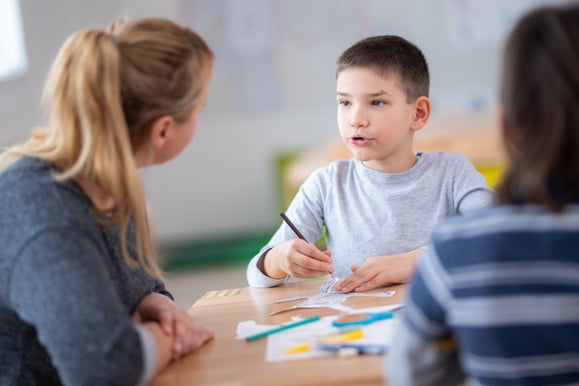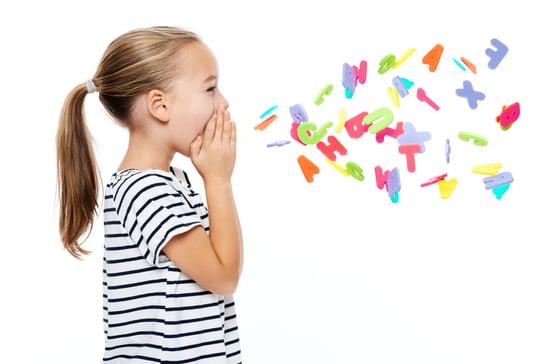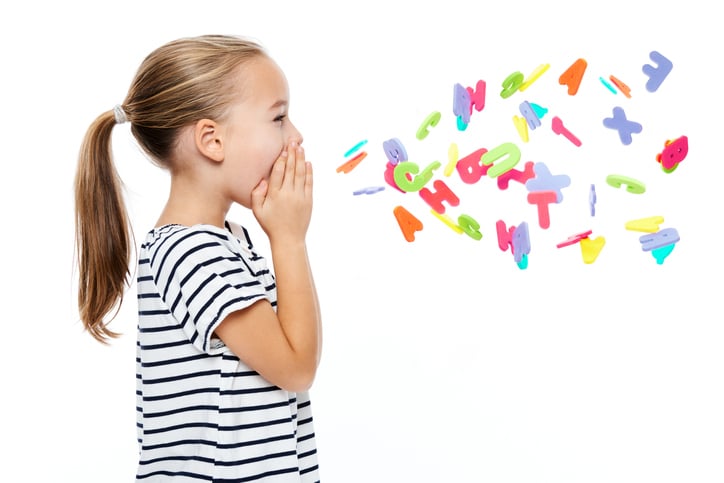What is Echolalia?
Understanding the Role Echolalia Plays in Language Development for Autistic Children
Echolalia Defined
Echolalia, the repetition of certain words or phrases, is a commonly reported symptom among many on the autism spectrum. It often develops during the early toddler years when a child first learns to make sounds and speak words. Although typically developing children tend to outgrow this stage by the time they begin speaking in full sentences (around the age of 4 or 5 years), autistic individuals may continue to engage in echolalia throughout their childhood years and beyond.1
Echolalia is most often a sign of autism, especially when present in the childhood years, and it can be used as a pathway for language development when addressed early on by a knowledgeable professional or caregiver. (It is also worth noting that echolalia can be associated with several other brain-based disorders, including traumatic brain injuries, amnesia, schizophrenia, and dementia.)

Echolalia in Autistic Children
Autistic individuals may repeat words or phrases for a variety of reasons, and the function of echolalia can be multifaceted, even changing over time. A few common functions of echolalia include:
-
Aiding in the development of language:
For many autistic children, echolalia might serve as an initial step in the development of spoken language. To illustrate, a child may begin learning to communicate through the repetition of certain words or phrases and continue practicing speaking skills with others in an attempt to converse more fluently, efficiently, and effectively over time.
-
Labeling and getting the attention of others:
Echolalia can be used as a way to gain the attention of others or label (i.e., tact) things seen in the surrounding environment. By repeating a phrase such as “Clifford the big, red dog” after hearing the Clifford theme song play on TV, for example, a child may gain the attention of an adult or peer and spark a conversation about the episode by labeling the character with a repeated phrase.
-
Scripting:
Rather than developing their own words, phrases, or responses to use in conversation, children on the autism spectrum may engage in echolalia as a form of scripting. When asked “Do you want bubbles?” (for instance), an autistic child might simply repeat the question back because the child does not fully understand what is being asked or may not know how to use an affirmative response like “yes” properly.
-
As inner monologue:
Some autistic individuals use the repetition of words or phrases as a way to process the tones, emotions, and intents of others, especially in new or unfamiliar settings. A child may repeat a familiar phrase like “Got this!” during stressful situations, particularly after hearing the phrase modeled by a parent or peer at a previous point in time. As a result, the repetition of familiar phrases can boost self-confidence and improve internal dialogue during new, unfamiliar, or stressful situations.
-
For a specific purpose:
Autistic children may engage in echolalia as a way to voice their needs, wants, and desires or to relay a specific message to others. A child, for instance, might say “Tag, you’re it!” to express his desire to play together after previously hearing a peer use the line to initiate a game of tag.
-
Because it’s soothing:
Echolalia can be a way to calm oneself and is often a form of self-stimulation (or “stimming”) behavior among autistic individuals. Repeating certain words or phrases may function as a form of self-regulation for many autistics who find repetition soothing, comforting, and engaging.2
To summarize, echolalia (i.e., the repetition of words or phrases) can function as a coping mechanism for autistic individuals by providing support, a comforting internal dialogue, and even a pathway for spoken language to develop. It can, furthermore, be used to initiate conversation with others and allow autistic children to express their needs, wants, and desires more openly.

Forms of Echolalia Based on Timing
There are several different forms of echolalia based on timing. Immediate echolalia, for example, refers to the repetition of words or phrases immediately after hearing them; whereas, delayed echolalia is just the opposite: the repetition of words or phrases heard at a previous time. Immediate echolalia is similar to an echo--where one repeats back what was said at the moment--but delayed echolalia occurs at some point after the words or phrases are originally spoken.
As a result, it is not uncommon for delayed echolalia to develop several days or weeks after listening to a song, overhearing a conversation with peers, or watching a movie at school. Singing “Old McDonald Had a Farm” during a speech therapy session is an example of delayed echolalia because the repetition occurs after the song was originally heard. If the phrase is echoed at the same time (or shortly after) the child hears it on a music video, however, immediate echolalia would be at play.
Forms of Echolalia Based on Function
The two types of echolalia based on function include interactive and non-interactive echolalia.
- Interactive echolalia
This is considered a “functional” form of echolalia because the repeated words or phrases serve a specific purpose in conversation. A child, for example, may repeat an answer to a question that the child previously heard a parent or peer use while speaking. In this case, interactive echolalia would be at play because the response is functional (i.e., it serves a purpose by answering a question during a conversation with another person).
-
Non-interactive echolalia
This is the opposite of interactive echolalia because it does not function as a form of back-and-forth communication and is intended only for personal use. An example of non-interactive echolalia would be a child repeating a line the child heard from a commercial about car insurance during a non-relevant time (such as in math class at school). Non-interactive echolalia is at play because the repetition of words does not serve a specific purpose, and the child is repeating phrases to herself rather than initiating a conversation with others. While non-interactive echolalia can involve the repetition of words or phrases as a way to practice spoken language, use self-regulation skills, or engage in stimming behavior, the overall intent is not to speak or communicate with anyone else.3

Echolalia in Language Development
Echolalia can serve as a pathway for language development, especially when addressed by a professional (e.g., speech therapist) or informed caregiver during the early years of a child’s development. The following is a breakdown of the stages and progression that echolalia may take in language development:
- First, a child might echo the words of another person (e.g., a parent, peer, therapist, or teacher) in a familiar setting without fully understanding the meaning behind what they are saying.
- Subsequently, a child learns to modify sentences, sayings, and chunks of language by mixing and recombining words into slightly different structures based on phrases they have already learned, recognize, or with which they are familiar.
- During the third stage, a child may begin using several words, short sentences, or phrases to express themselves and communicate their needs, wants, and desires to others more clearly.
- Finally, language becomes robust, natural, and flexible as a child learns to vary his sentence structure, flow, and style. While communicating with others and gaining additional practice, the learner also builds self-confidence in the interim.4
According to the Gestalt theory of language acquisition, echolalia plays an essential role in the development of language, especially in autistic youth who may learn to communicate through a series of predictable stages. For more information about the Gestalt theory of language development, visit this page of the American Speech-Language-Hearing Association (ASHA).
References

Kenna McEvoy
Kenna has a background working with children on the autism spectrum and enjoys supporting, encouraging, and motivating others to reach their full potential. She holds a bachelor's degree with graduate-level coursework in applied behavior analysis and autism spectrum disorders. During her experience as a direct therapist for children on the autism spectrum, she developed a passion for advocating for the health and well-being of those she serves in the areas of behavior change, parenting, education, and medical/mental health.




